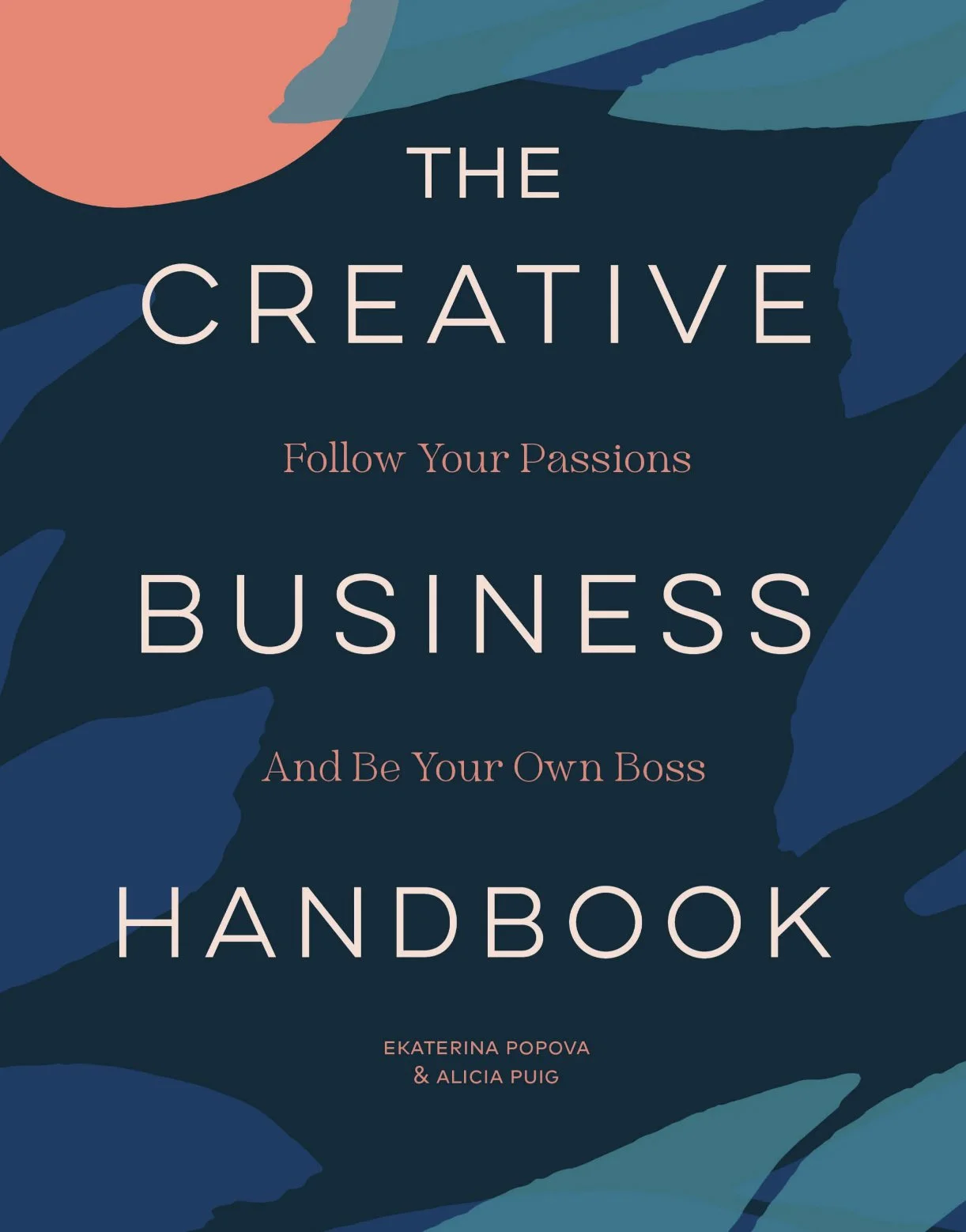Authors of The Creative Business Handbook Open Up About Empowering Artists
Alicia Puig and Ekaterina Popova have made a name for themselves in the art wold, and we are pleased to learn more about their latest book titled The Creative Business Handbook which released this summer.
Figuring out how to make a living from your creative work poses unique challenges and obstacles. From choosing the right business model to building a brand, from managing your time to scaling up your production—starting your own creative business often means doing it all yourself. Enter The Creative Business Handbook by Alicia Puig and Ekaterina Popova, the dynamic duo behind Create! Magazine, PxP Contemporary and Art Queens. You can order your copy today on Amazon.
INTERVIEW WITH ALICIA PUIG AND EKATERINA POPOVA
Congrats on the publication of The Creative Business Handbook, which includes valuable advice for artists and creatives. Can you share what inspired you to write the book and tell us a bit more about what it entails?
It really started after we released our first book The Complete Smartist Guide, which is a comprehensive business guide for emerging artists seeking to develop their careers and sell their work with or without a gallery. People in our community made significant strides professionally, but then they asked us what’s next? They wanted to know not just how to be a working artist but also how to build something bigger: a community, magazine, membership, podcast, gallery, or any other idea they’d been dreaming of! So, we used a similar format and structured this new guide to walk them through the key steps of starting a creative business from scratch. It begins with the ideation stage and takes them all the way through growing and scaling. We include action steps at the end of each chapter as well as interviews with other leading entrepreneurs such as curators, authors, art advisors, art therapists, coaches, and more.
You both work so closely with artists. What do you think are the most significant challenges artists face today?
Like everyone, we’ve all had to adjust with inflation and that can be a huge strain on the balance between revenue versus profit (we made sure to address money in depth in our book!). Then, within our industry specifically, there’s still a lot of gatekeeping. But something we talk about in both books is that you should always make your own definition of success because trying to fit others’ expectations only limits yourself and your potential. If you want to succeed within the more ‘traditional’ systems in the art world, that’s great - but we’re proof that you don’t have to and can still be financially secure, participate in exciting opportunities and projects, and love what you do.
What advice would you give to an artist who is just starting out?
We’ve said this time and again, but it’s to keep going. Kat reshared this message from another creator on social media recently: Whenever I get to a low point where I think “Why do I even bother?” I just try to remind myself “This is where most people stop, and this is why they don’t win.”
After many years in this industry, we’ve seen too many artists give up after one submission to a juried show is rejected, one potential client falls through, or one exhibition opportunity didn’t end in success. We are still here because we’re on our 50th, 100th, or, more realistically, our 1,000th instance of putting ourselves out there. Brush yourself off after rejection, continue to be your own advocate, and we love the tip from Beth Pickens’ second book that you should aim to apply to three new opportunities for every one you don’t get!
There are many highs and lows to running a creative business. What keeps you motivated when times are tough?
The better question is probably ‘who’ rather than ‘what’ and one of the most important answers is the artists we work with. We do what we do so that emerging artists around the globe can continue to pursue their passions.
Especially regarding those artists who we work with directly - yes, we believe they’re all incredibly talented creatives, but we’re also lucky to simply work with great people. You work harder when you know people like that are counting on you.
We could also definitely say each other. We wouldn’t be here without our many venting and encouragement sessions over the years and that is only scratching the tip of the iceberg of our friendship and business relationship. We’re lucky and grateful to have this partnership because we’ve both been burned in professional relationships with other women in this industry in the past.
Finally, as much as we enjoy running our companies, we take breaks as we need them, travel, work out, and spend a lot of time with our respective partners and dogs. Of course, we deal with issues or obstacles as they arise, but then we encourage ourselves to unplug as much as possible. Even when things get hard, try not to let your business become your life.
Over the last several years, the emerging artist market has changed, and there are many platforms and galleries that have flourished, including the ones you run. If you had to say that “one thing” attributed to your success, what would you say it was?
Narrowing down to one ‘x factor’ is tough! Let’s go with really listening to what our audience’s needs are. You can create the most unique, affordable, (add any descriptor here) product or offer, but if nobody actually needs it - you won’t have a sustainable business.
You are both active on social media and have an engaged audience. Are there any secrets you can share that artists might find valuable as they look to grow their platforms?
Our secret is to take advice from anyone who claims to have the secret to social media with a grain of salt. But honestly, if we had to give tips: focus on 1-2 platforms at first, experiment with various types of content (videos, images, text), be yourself, use your analytics to see what performs best, and stop worrying about likes or follows because those numbers fluctuate even if you have a large account.
Better advice: focus on growing your email list over your follower count.


